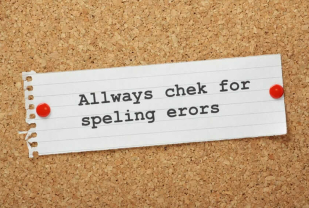Here’s a little question for you to think about…
How come students who perform outstanding research, avoid plagiarism, never procrastinate, hit their deadlines, and flawlessly format their papers can still fail them?
The answer is actually much simpler than you might think.
- Ask questions first
- Know how much time you’re going to spend on the whole writing process
- Be aware of all the subtasks
- Don’t miss out on the outline
- Structure your paper correctly
- Don’t overdo it
- Plan the entirety of your work
- Know what to write about in each part of your paper
- Choose a clear way to organize the information
One of the most common reasons why hardworking students still fail to get high grades on their paper writing is poor planning.
So today, we’re going to address this issue.
We’ll tell you how to plan a paper so all the effort you put into writing won’t be in vain.
If you’re still doubting the importance of properly planning your paper, let me just say that out of the whole process, the prewriting stage usually takes about 50% of the time. You’ll spend the remaining 50% writing the draft and then revising, editing, and proofreading it.
Good planning leads to clear and coherent writing in your paper. And that’s what you need to aim for to get your message across.
Want to know how to write a plan for your paper?
Check out the tips below.
1. ❓ Ask questions first
Begin the planning of your paper by asking yourself a set of simple questions:
- What is your paper going to be about? Try to answer in a single sentence. Answering this question will help you with further planning and developing a thesis statement.
- How big of a contribution will your paper make to the sphere you’re writing in? Have you found anything similar to your work already? Will it somehow be connected to any of the previous findings in your sphere?
- How will the findings presented in your paper influence the discipline? Does it contain new concepts, practices, or perspectives?
- Who is going to be interested in your work? Who is your target audience?
Answering these questions before you create a writing plan will give you a better understanding of what direction you should take in your research. These answers may even change your entire writing process, as compared to what you were expecting it to be before.
2. ⏳ Know how much time you’re going to spend on the whole writing process
This will allow you to set smaller deadlines and make sure you complete everything on time and according to your paper plan.
As we mentioned earlier, prewriting should take about 50% of the total time. So, you can at least divide the total time in half, and when the time comes, stop preparing and begin writing. This advice is equally suitable for writing the research paper, an essay, or any other sort of assignment.
3. ❎ Be aware of all the subtasks
Prewriting consists of numerous subtasks. In fact, researching is actually part of planning your paper.
Here’s what else you need to do when planning a research paper, apart from the research itself:
- Carefully study all the instructions and requirements regarding your paper. Knowing the style and formatting requirements along with the required word count will make it easier to think the whole paper through.
- Look through the range of topics available to you and select the one that you’re the most interested in. This will allow you to get fully invested in the writing process.
- Gather all the key terms and ideas so that you can strategically organize them.
- Explore other topics that are connected to the one that you’ve selected. You’ll be able to understand the relationships between them and provide more in-depth detail in your writing.
- While studying the sources, always write down where you found a specific idea. These notes will serve as the basis for your reference list.
4. ❌ Don’t miss out on the outline
Another important component of your paper plan is an outline.
In writing the outline, you’ll sum up everything that you were able to find and use that information to decide on the structure of your paper.
An outline will also allow you to see your paper as a whole. At this stage, you’ll have a chance to re-evaluate the work you’ve done so far. You’ll see how all the findings and ideas hold together and what, if anything, needs to be changed.
While following the standard structure for your paper, you can expand your outline a bit by adding headings and subheadings and writing short descriptions of what will be under each one. Don’t get too involved in the writing yet, though. You’re still laying the groundwork for the future.
5. 📋 Structure your paper correctly
There’s one common mistake that many students make, and you can avoid it while creating your outline.
You need to make sure that the structure of your paper is not being determined by the structure of the source materials you are using.
In other words, if you want to write a paper about a certain historical period, for instance, it isn’t necessary to describe the events chronologically.
Remember: the main goal of your paper is to present your own argument—not to just reproduce what’s already written in the source material.
The free structure of your paper will allow anyone reading it jump to any part of your work and understand what it’s about without having to read the whole thing. Instead of following the set plot, you’ll deliver strong points that support your argument. If you have doubts about how to properly structure your paper, check out some free college essays samples for inspiration.
6. 🤯 Don’t overdo it
Having a proper writing plan brings numerous benefits:
- It helps you craft strong arguments and place them in a logical order so it’s easier for readers to follow.
- It allows you to avoid repetition and write an information-dense paper.
- It makes it easy to spot whether you’ve left out any important details regarding your topic.
- It makes writing the draft way easier. Because you already have the core structure prepared, you can concentrate more on the clarity of your writing while creating the draft.
But everything has its limits, so you need to make sure not to overdo the planning.
At the very least, getting carried away with planning can leave you with very little time to write the actual paper.
Overplanning can also result in a paper that tries to cover too broad of a topic and ends up having too little depth. That’s why it’s important to decide on a topic and narrow it down at the very beginning (and stick to that topic throughout the whole process).
Also, if you try to plan the paper beforehand in its entirety, it won’t leave much room for being creative or adding new ideas or thoughts during the writing, and it may damage the writing style in general.
It may sound counterintuitive at first, but we’re still talking about planning your paper, not writing it. Stick to this thought, and you’ll be able to find the right balance.
7. 💡 Plan the entirety of your work
Even though prewriting, which includes most of the planning, takes only half of the total time you’ll work on your paper, that doesn’t mean that you can’t plan out the remaining tasks you’re about to complete.
And there are more than enough things to pay attention to.
First things first, just like in the prewriting stage, you can set deadlines for the rest of your tasks—which include drafting, revising, editing, and proofreading. Doing so will help you stay on track and know exactly how much time you have left.
When planning to write your draft, consider the following:
- Keep to a fast writing pace. You’ll revise the text later. The main goal here is to put your thoughts down on paper, so they won’t get lost.
- Don’t hesitate to leave blank spaces if you’re in doubt about something or don’t have enough relevant source material. You can always come back to these spots later. You’ll be able to proceed and keep the logical structure that you designed earlier.
- Know your audience well. You may consider changing the tone, depending on whom your paper is aimed at.
- Always stick to the outline. After all, you wrote it for a reason! After you’re done writing your draft, double-check it to ensure that you’ve kept the structure you wanted to have. You can also make changes if some parts of your work don’t seem to go together well.
Next up are the revision, editing, and proofreading stages. Here are the major points to keep in mind when building plans for these tasks:
- Make sure you have enough materials and evidence to support your argument.
- Check to make sure that the introduction, body, and conclusion of your paper are logically connected to each other.
- Work on putting paragraphs in a logical order. Also, make sure that your writing is clear and cohesive.
- Work on transitions between key points and thoughts in your paper.
- Pay enough attention to the style of your writing. Avoid repetition.
- Make the structuring of your sentences varied. It will make reading your paper much more pleasant. Also, be sure to choose the right words based on your audience.
- Check once again whether your work fits all the format assignment requirements.
- Be ready to read your paper aloud to know how it sounds and check for any wording issues.
There’s another benefit of such thorough planning: you can use the results of your work as a writing plan template for your future papers!
8. ✍️ Know what to write about in each part of your paper
When planning and writing, you need to clearly understand one idea: each part of your paper has its own purpose.
So, apart from deciding what you’re going to put into those parts, you also have to be aware of the functions they’re supposed to perform.
The introduction will act as the main hook. You need to grab the attention of your readers as fast as possible, otherwise you’ll probably not manage to do it at all. Add an attention-grabbing quotation or a strong statement.
The body of a research paper (or any paper in general) is the biggest and the most informative part. The length will depend on the points you want to cover. Your paper requirements will influence the length of the body, too.
For this part to be persuasive enough, you’ll have to add plenty of detail. To make it easier for you, imagine that your reader is completely unfamiliar with the topic and that it’s your job to educate him or her. However, also keep in mind that the information you provide shouldn’t be too general. You’re still trying to prove a certain argument. Therefore, you need to stay on point.
Go easy on the quotations. Use paraphrasing instead (and make sure to use it right). Paraphrasing will show that you understand your topic well and that you’re able to make your own contribution to it. Also, don’t be afraid to make controversial statements. You can use any counter-arguments as further proof of you being right. And you’ll be able to show the issue from different perspectives.
Make sure to write your paper with a specific topic sentence at the beginning of each paragraph. These sentences will help your readers understand what you’re going to talk about in a particular part of your work.
Finally, it’s time to take care of the conclusion. You don’t have to overload it with information. Just revisit some of the main points you made previously, and then draw a logical conclusion. You can also mention a few ways to further develop studies on your topic.
Knowing the role of each part of your paper at the planning stage will allow you to gather just the right material. You’ll also be able to organize your paper so that it makes the impact you want.
9. ↔️ Choose a clear way to organize the information
This is another point to consider when planning your paper. You need to know for sure exactly how you’re going to share all your thoughts and ideas.
This tip goes hand in hand with one we talked about earlier, about having a free structure for your paper (5th tip).
While you do need to do your best to keep your paper structured in this way, there still has to be logic in the way you deliver your information.
For instance, you can use the compare and contrast pattern. This pattern is perfect for describing similar or different objects. The main trick here is to talk about the objects to an equal extent. Otherwise, your paper may look like two separate works jammed together in a rush. You need to continuously reference your objects, and make sure that every part of your paper is linked together.
Another option is the description pattern. This pattern is used to portray a certain event, place, or person. It usually contains a great number of small details and involves the use of figurative language. The description should appeal to the reader’s senses to improve the overall experience and impression of your work. This style would be perfectly suitable if you need to write an essay.
You can also go with the illustration pattern. With the help of this pattern, you’ll uncover your topic through a series of relevant examples, studies, and hypotheses. This style allows for different methods of organizing ideas: from specific to general, or vice versa. It also makes your paper writing steadier and more balanced.




Thanks! This is what I need for my school! 😀
Glad to hear that! Thanks for your feedback!
I like this.I was never really able to write an essay but seeing this plan helped me understand how to write one.
We are so glad to hear that! Thank you for your feedback, Lanai!